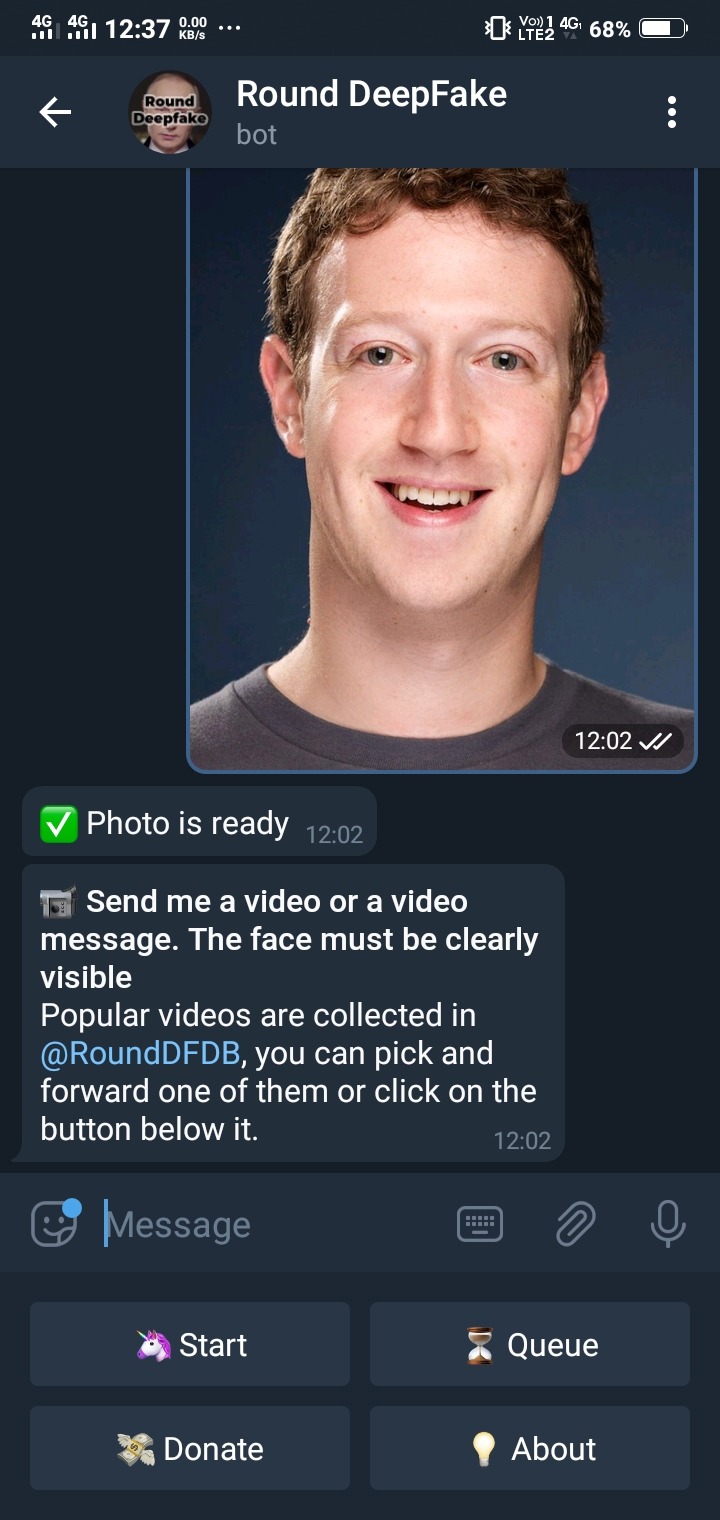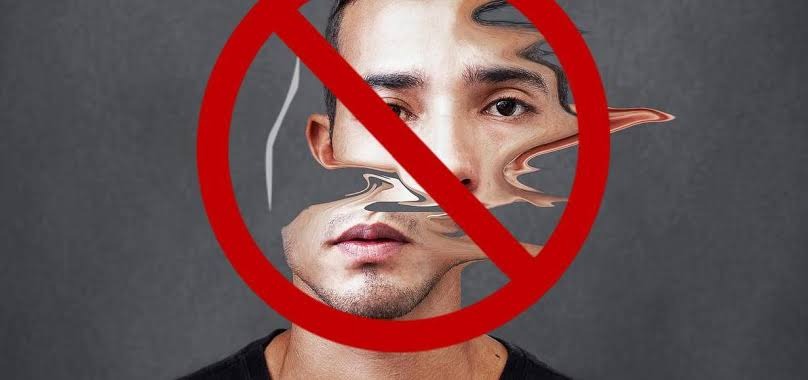The Ultimate Guide To DEEP FAKE & What Softwares using deepfake ?
DEEPFAKE
The term DeepFake is typically used to refer to a video that has been edited using an algorithm to replace the person in the original video with someone else (especially a public figure) in a way that makes the video look authentic. The 'deep' in 'Deep fake is likely related to a process called "Deep learning".
Types Of Deepfake Recognition :
- Hand-crafted Features
- Learning-Based Features
- Artifacts
Hand-crafted Features
While deepfake procedures make practical-looking substances, there are regularly clear defects that a human or calculation can spot after looking into it further. One model is unnatural facial highlights. In this class, we'll a few strategies that concentrate and specialist explicit highlights to perform deepfake discovery.
Learning-Based Features
We'll investigate learning-based strategies for recognizing deepfakes. A significant number of these techniques use convolutional neural organizations (CNNs) to get familiar with the highlights important for deepfake recognition.
The FaceForensics++ paper assesses a few learning-based techniques and one hand-created highlight extraction strategy on their capacity to identify falsification at various video quality levels. They pre-separate the facial district from the information picture (and concentrate a middle yield or resize for specific strategies) and utilize the different techniques to distinguish fraud. They saw that all methodologies accomplished high exactness on crude information. In any case, execution dropped for compacted recordings. Among the tried strategies, the XceptionNet model accomplished the best across all video quality levels.
Artifacts
As of now, deepfake creation strategies are not great. This implies there is frequently proof which we can investigate to find whether a piece of media was controlled or potentially is a deepfake. In this classification, we will investigate some location techniques that search for this proof, frequently called curios.
SOFTWARE USE IN DEEPFAKE EDITING
Simple software tools such as FakeApp and DeepFaceLab have since made a comparable effect available to all. The technology offers interesting possibilities that range from dubbing, improving, and repairing video to solving the uncanny valley effect in video games, avoiding actors having to repeat a fluffed lines, the creation of apps that allow us to try on clothes or hairstyles, and even to train doctors, but many fear it being used for nefarious ends. These are the fakes that have scared (and amused) people the most so far.
Some other software :
1. Zao
Zao is the latest app that has gone viral in China for its ingenious capability to create deepfake videos within seconds. You can choose a video clip from its library which includes scenes from Chinese drama series, Big Bang Theory, popular Hollywood movies, and more. Within a few seconds, Zao creates a seemingly authentic deepfake video that frankly looks natural and indistinguishable from the original video. The surprising bit is that the app takes only a few seconds, unlike powerful computers which can take hours to train the Generative Adversarial Network responsible for creating deepfake video.

Regarding availability, the Zao app is only released in China for both Android and iOS users.
2. Deepfakes web β
Deepfakes web β is a web service that lets you create deepfake videos on the web. It uses Deep learning to absorb the various complexities of face data. Deepfakes web β can take up to 4 hours to learn and train from video and images whereas it takes another 30 minutes to swap the faces using the trained model.

Even though it uses a powerful GPU on the cloud, it can take hours to render all the data. It goes on to show that creating deepfake videos is no child’s play and seeing Zao do it within seconds is truly game-changing. Anyway, if you want to try deepfake videos for research in computer vision, you can go for Deepfakes web β.
Visit Website (Paid, $2/hour of usage)
3. AVENGETHEM
If you are a Marvel fan, AvengeThem is the best way to experience deepfake videos. It’s a website that lets you swap your face with a Marvel character in GIFs. In essence, it’s not a complete deepfake app as the website creates a static 3D model of your face. , AvengeThem is the best way to experience deepfake videos. It’s a website that lets you swap your face with a Marvel character in GIFs. In essence, it’s not a complete deepfake app as the website creates a static 3D model of your face.
However, at times, it does work really good and looks authentic. There are a total of 18 GIFs from Marvel Cinematic Universe including Star-Lord, Black Widow, Iron Man, Captain America, and more.

You can choose to become a superhero as you want and can also share the GIF with your friends. Simply put, if you want to enjoy deepfake videos with your favorite Marvel character, AvengeThem is for you. I tested this website and it works quite fast and the results are surprisingly good.
Visit Website (Free)
4. Reface
You might recall one of our reports where we showcased a deepfake app named Doublicat to help you make fun GIF memes. Well, the developers of Doublicat have renamed the app to Reface, after Reface AI. Reface AI is the Generative Adversarial Network (GAN) behind the scenes. To use the app, all you need to do is capture your photo and then choose the gif that you want to use.

In a few seconds, the app will superimpose your face on the gif. It doesn’t work perfectly and the face superimposition will depend on the symmetry of your face and the gif you are using. That said, there are so many gifs on the internet that you will always have options. This can be the personalized gif creator that you can use to impress your friends.
5. MachineTube
MachineTube is another website that lets you create deepfake videos on your computer. It does not use cloud computing like Deepfakes web β, instead relies on your computer’s horsepower. It means two things: you need a powerful PC preferably with a high-end GPU and at least 2 GB of VRAM. Secondly, it may take hours before you get the final deepfake video which very much depends on your computer’s resources. MachineTube uses its highly advanced deep learning algorithm to process the image data.

You have to upload video, image samples, and then MachineTube starts swapping the faces. There are also few pre-defined models like Kanye – Obama, Rock–Cage, and more. Having said that, the best part about MachineTube is that it’s completely free and that is awesome. So, if you are a researcher or want to explore deepfake videos for fun, you can try MachineTube.
Visit Website (Free)
6. DeepFaceLab
DeepFaceLab is a Windows program that allows you to create deepfake videos. It’s primarily built for researchers and students of computer vision. However, if you want to learn about deepfake videos, you can definitely try this tool. It uses machine learning and human image synthesis to replace faces in videos.

Since DeepFaceLab is an advanced tool mostly for researchers, the interface is not user-friendly and you will have to learn its usage from the documentation. Again, it goes without saying that you need a powerful PC with a dedicated high-end GPU. Simply put, if you are a student specializing in computer vision, DeepFaceLab can be a great tool to understand deepfake videos.
Visit GitHub (Free)
7. Telegram Bot For Reface
This bot makes DeepFakes using First Order Motion Model for Image Animation.

Bot Link = https://t.me/RoundDFBot
Is Use of Deepfake Technology is legal or not?
In the USA, the Deepfakes Accountability Act (passed in 2019), mandated deepfakes to be watermarked for the purpose of identification. Virginia has also amended its law banning nonconsensual pornography from including deepfakes.
In India however, there is no explicit law banning deepfakes. Amidst the current laws in force, sections 67 and 67A of The Information Technology Act 2000 (“IT Act”) provide punishment for publishing sexually explicit material in electronic form. Section 500 of the Indian Penal Code 1860 provides punishment for defamation, but these provisions are insufficient to tackle various forms in which deepfakes exist.

Criminal Offense
Deepfake recordings are predominantly the fashioned variants of the first substance and may establish the offense of imitation. The demonstration of imitation (characterized under Section 468 of IPC) submitted with a plan that electronic record fashioned will hurt the standing of any gathering, or realizing that is probably going to be utilized for that reason will be rebuffed with the detainment of one or the other portrayal for a term which may reach out to three years and will likewise be responsible to fine.
On the off chance that the deepfake brings or endeavors to bring into disdain or scorn, or energizes or endeavors to energize antagonism towards, the Government set up by law in India, it will be rebuffed for the offense of rebellion under Section 124 of IPC.
Further, if an individual in deepfake video is undermined with injury to notoriety or property having a place with him or an intrigued individual with the purpose to make caution that individual or cause to do or preclude an illicit demonstration comprises the offense of criminal terrorizing. Area 506 of IPC gives discipline to this offense which incorporates the utilization of photographs or recordings for undermining or threatening any individual or his property or notoriety.
In addition, safeguarding on the likely result of the substance of deepfake, the blamed can be accused of the offense of purposeful affront with the goal to incite penetrate of the peace, promoting animosity between various gatherings on the ground of religion, race, a spot of birth, home, language, and so forth, and doing acts biased to the upkeep of harmony, or for conscious and malevolent demonstrations, proposed to shock strict sensations of any class by offending its religion or strict convictions.
Copyright Infringement
Deepfake recordings are for the most part mutilated or manufactured forms of the sound chronicle or visual account taken from a video or a film that may be protected work. Segment 14 of the Copyright Act, 1957 gives that the copyright proprietor of a cinematograph film and sound account has the selective option to do or to permit making a duplicate of the film, including a photo of any picture framing part thereof or making some other sound chronicle typifying it, respectively. Additionally, the ethical right of the creator in his work was perceived by the Delhi High Court in Amarnath Sehegal v. Association of India. The creator can guarantee harm for encroachment of his ethical right in regard to contortion, mutilation, or in any case adjustment in his work that would be biased to his honor or notoriety.
The copyright proprietor is obligated to common cures via directive, harms, accounts and in any case, as are or might be given by law for the encroachment of a right. Also, any individual who purposely encroaches or abets the encroachment of the copyright in a work, or some other right presented by the Act will be culpable with detainment that may stretch out to three years and with a fine which may reach out to two lakh rupees.
In any case, the copyright cure may not be the best arrangement in the situations where copyright may not dwell in the individual who is the objective of the deepfake. For instance, in cinematographic films, the copyright dwells with the makers of the movies and not entertainers. Similarly, in photographs, copyright could be possessed by the cameraman and not the individual in the photo. In this way, the solution for copyright encroachment may not be accessible to the objective.


Post a Comment